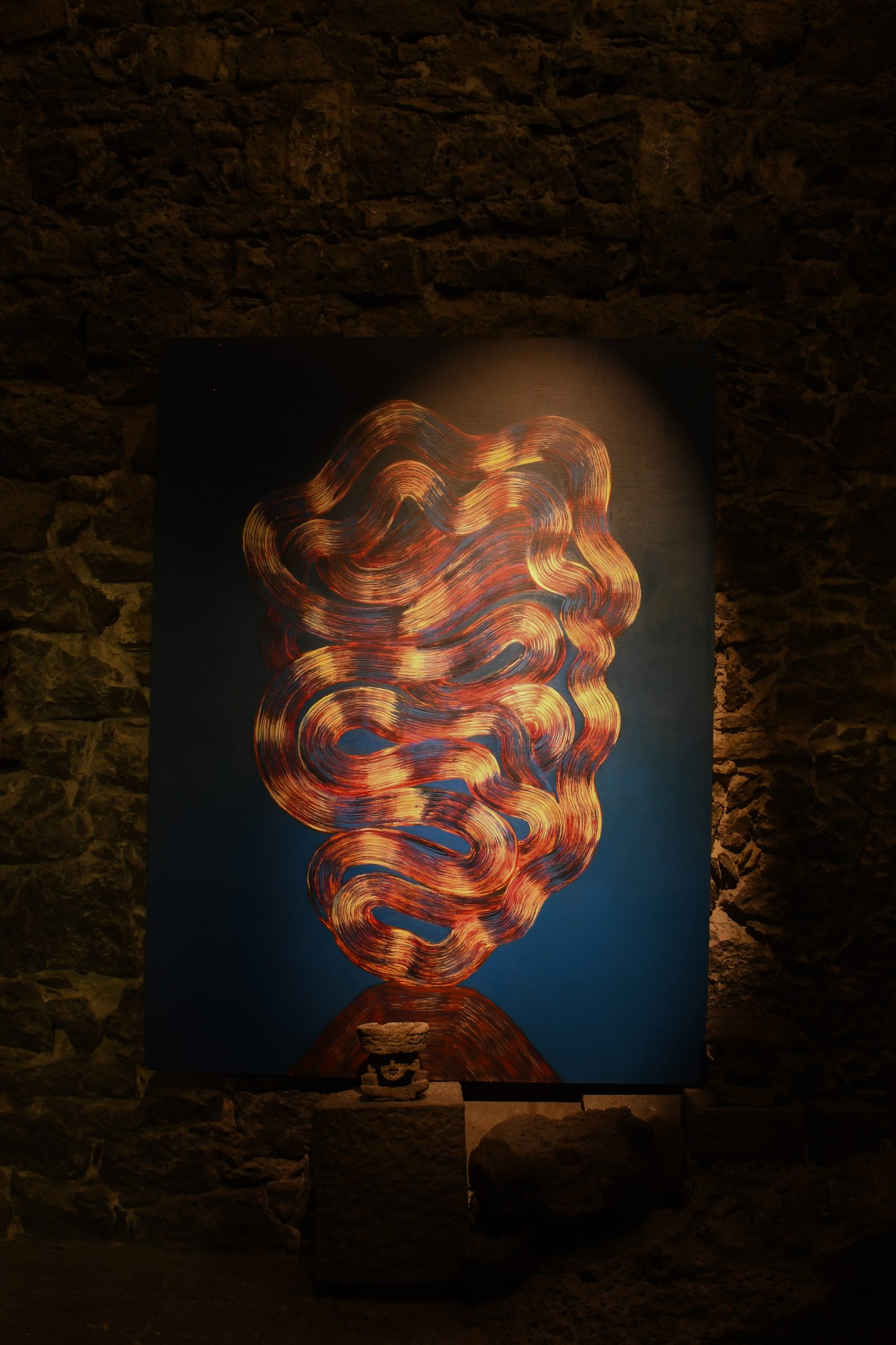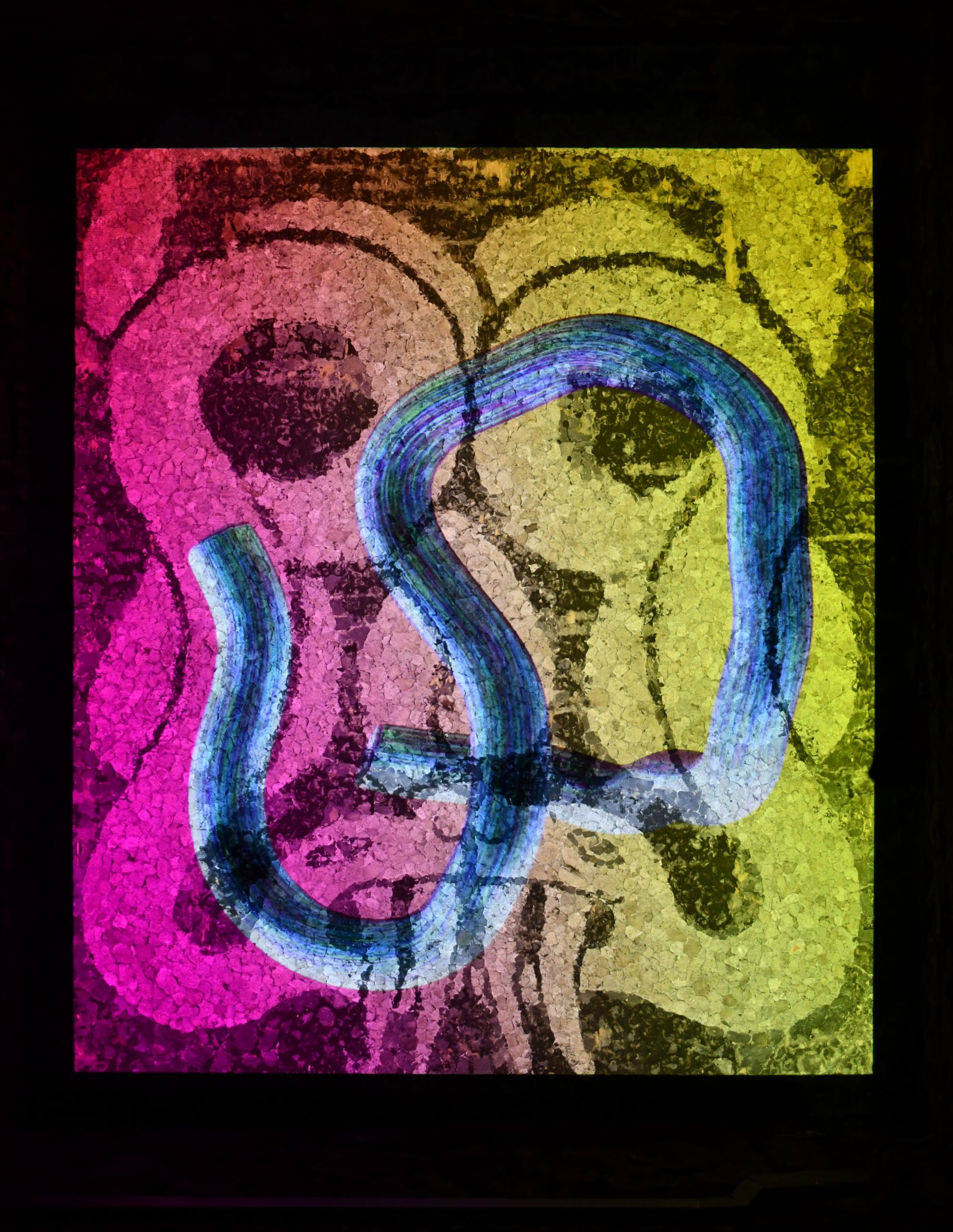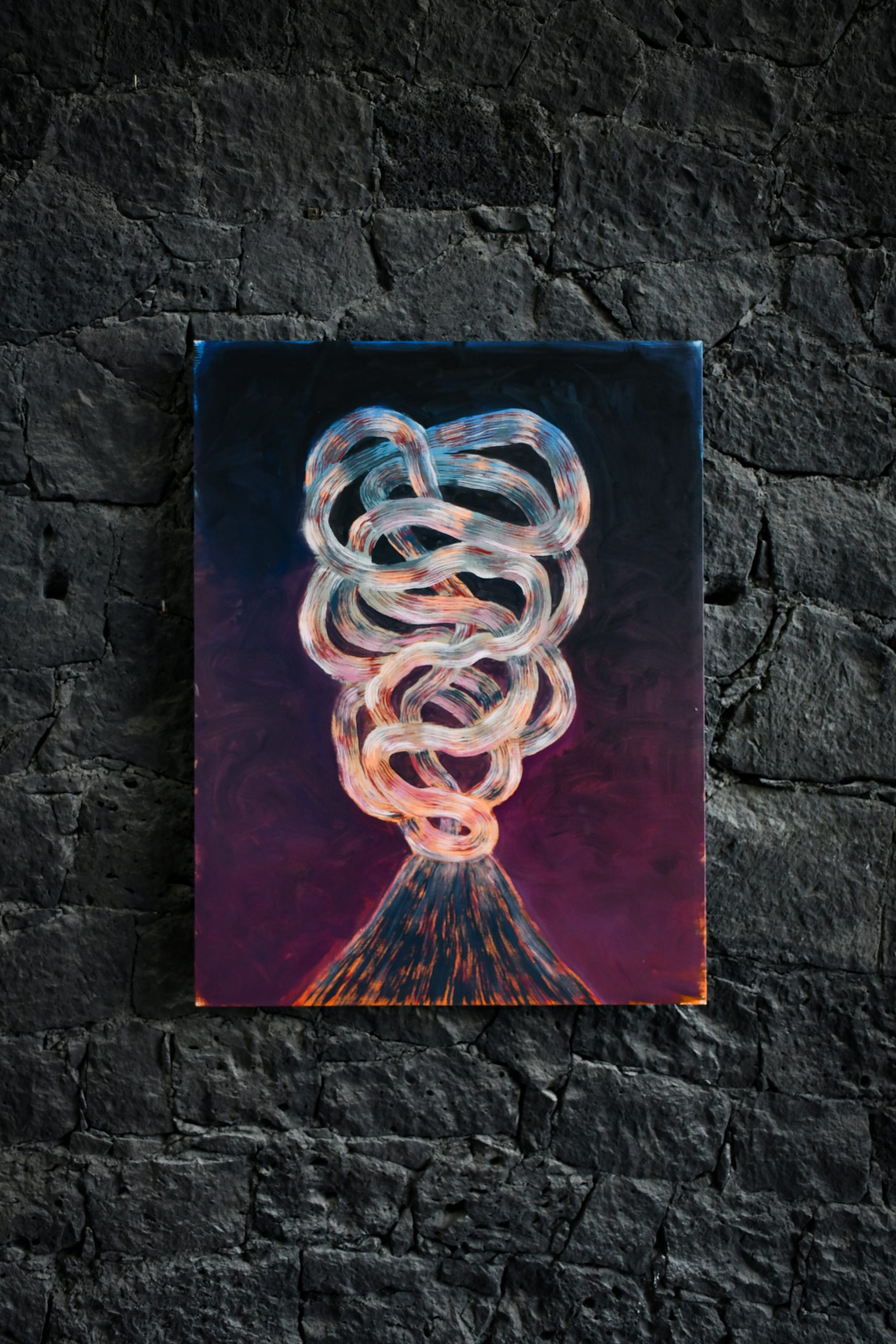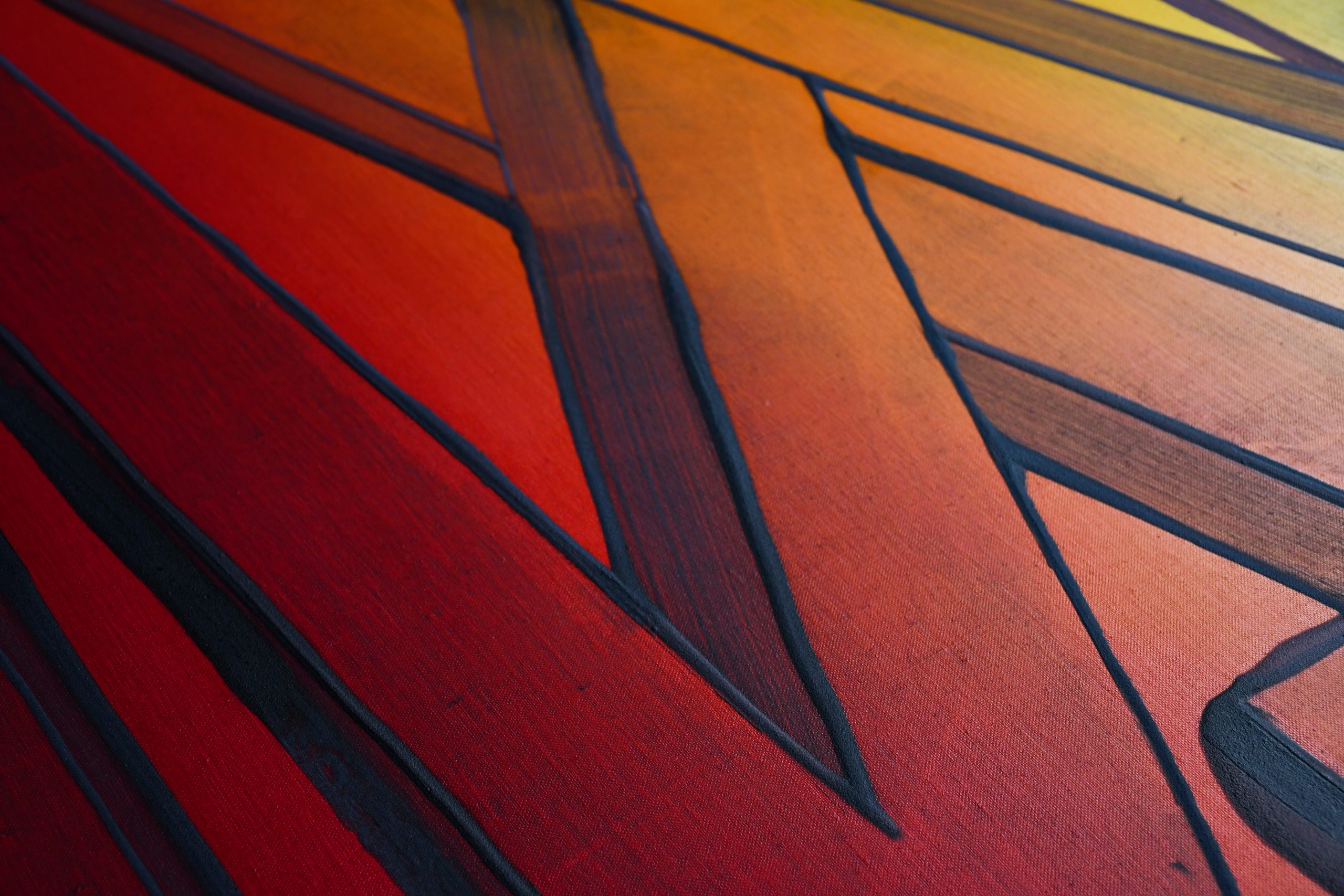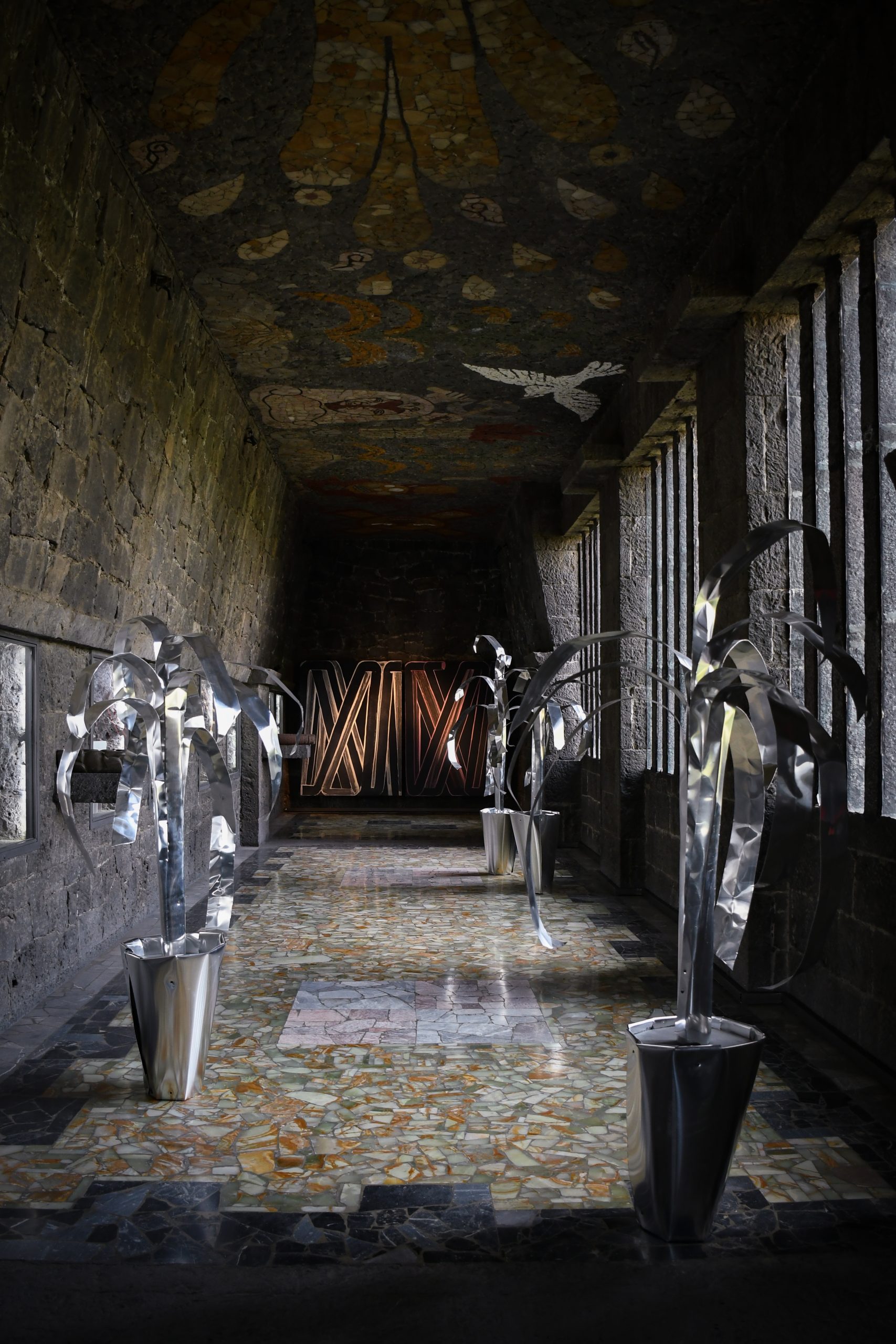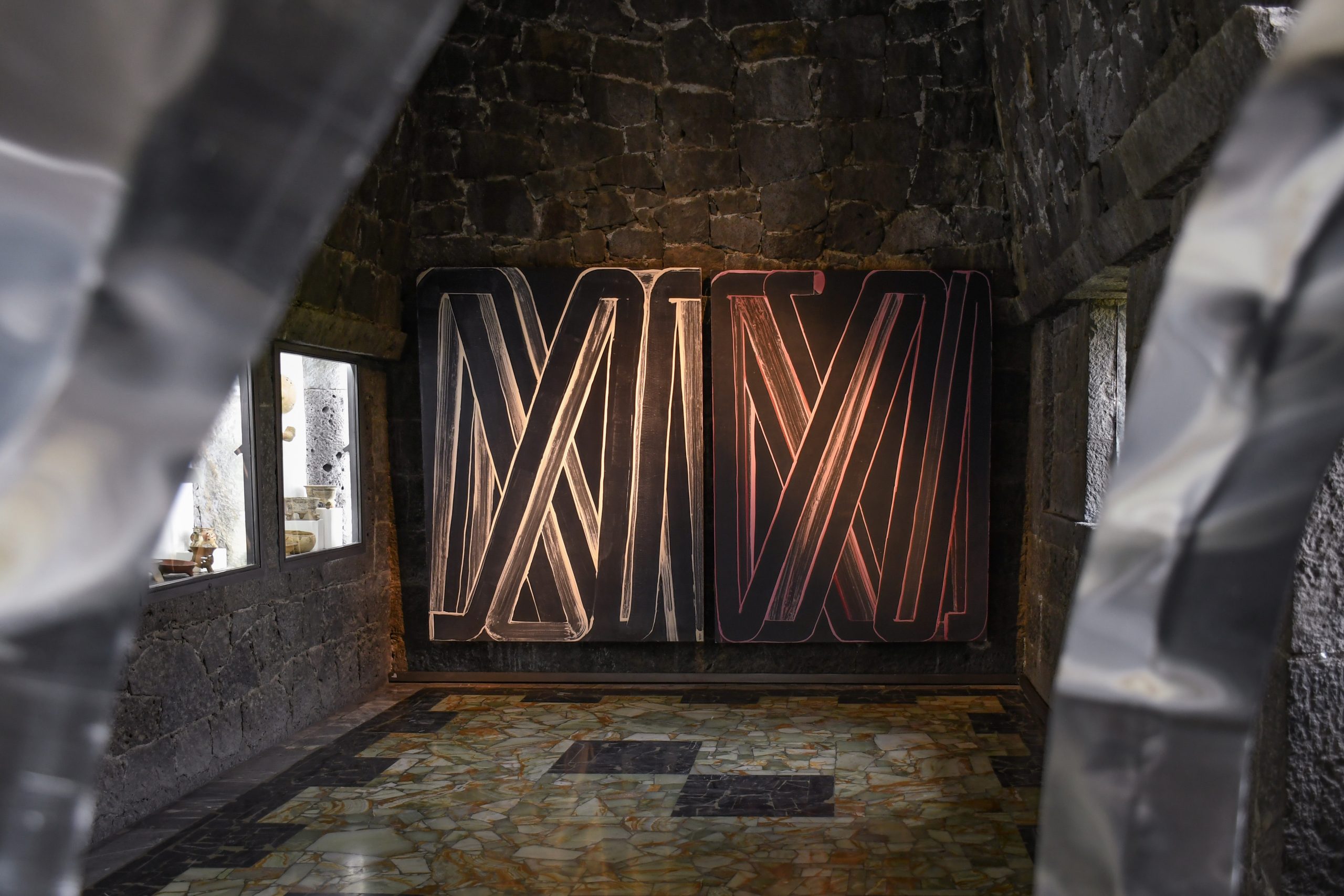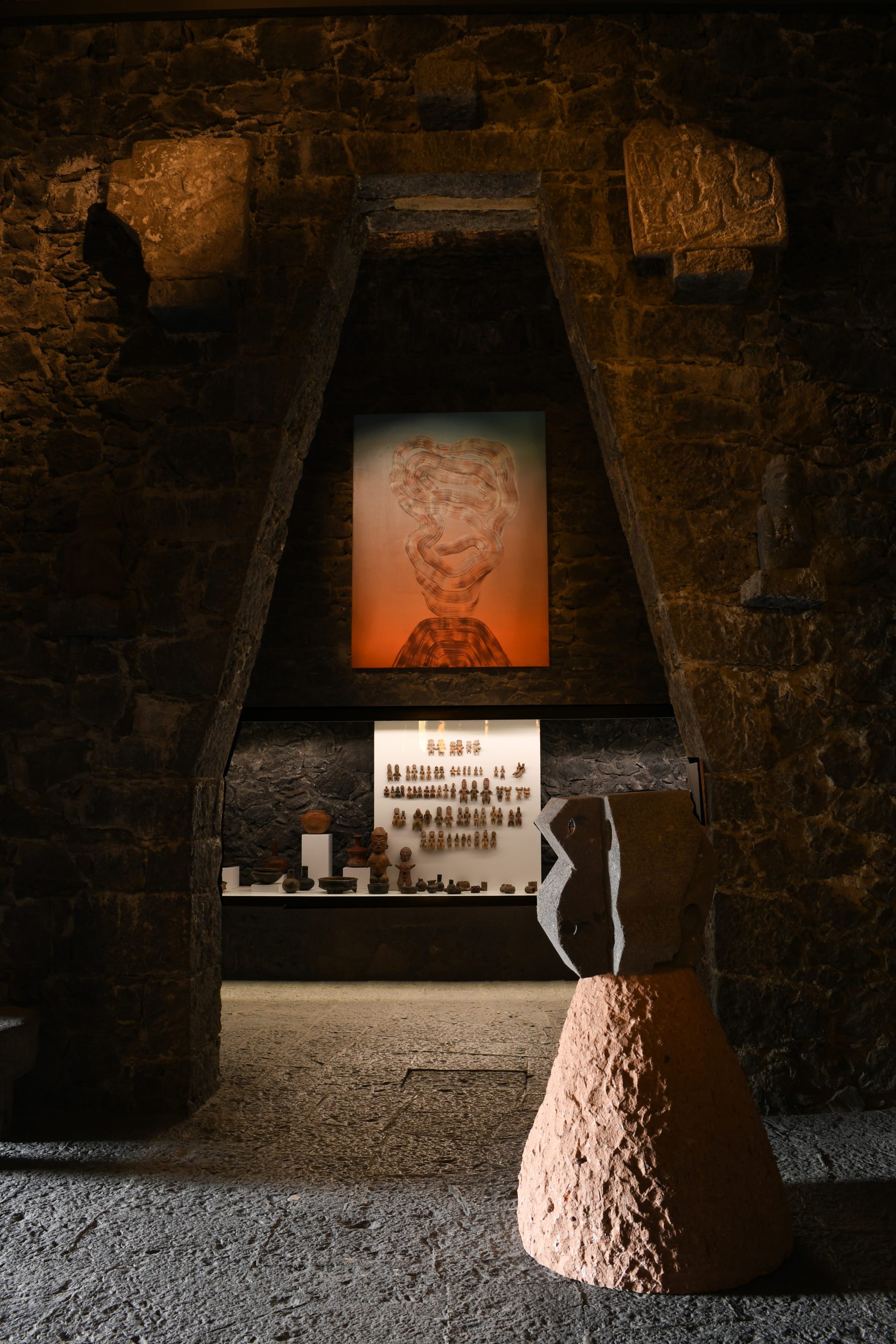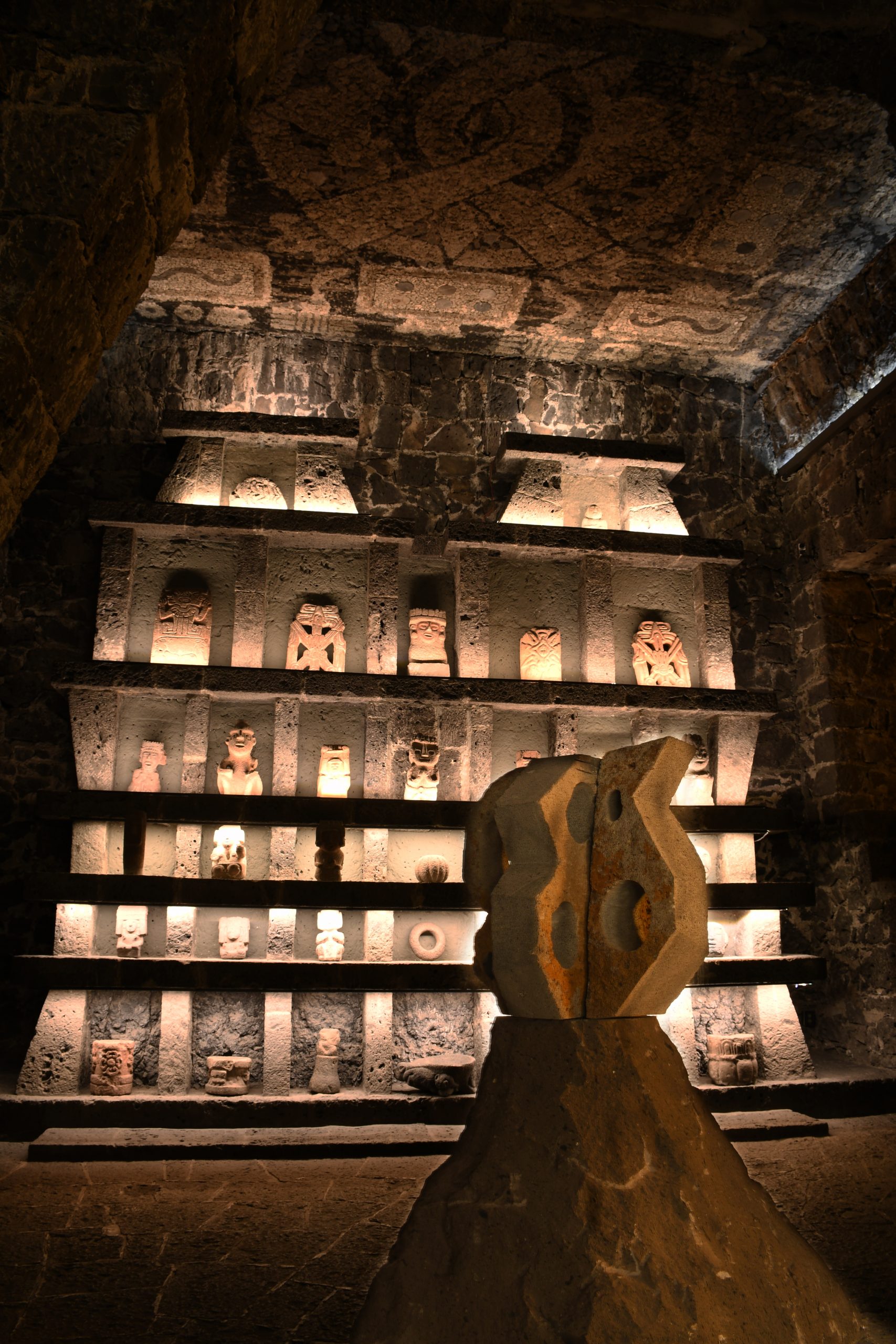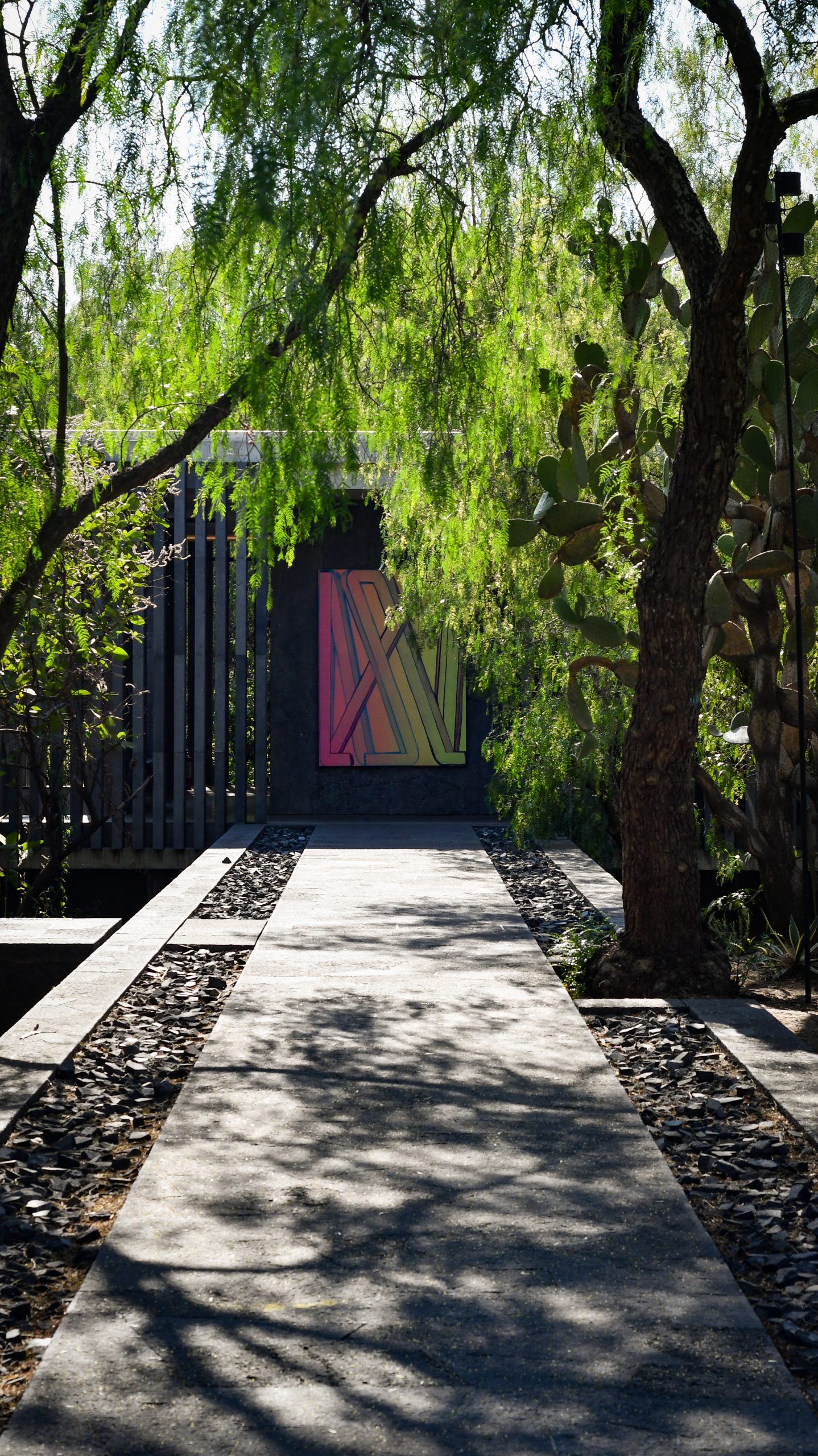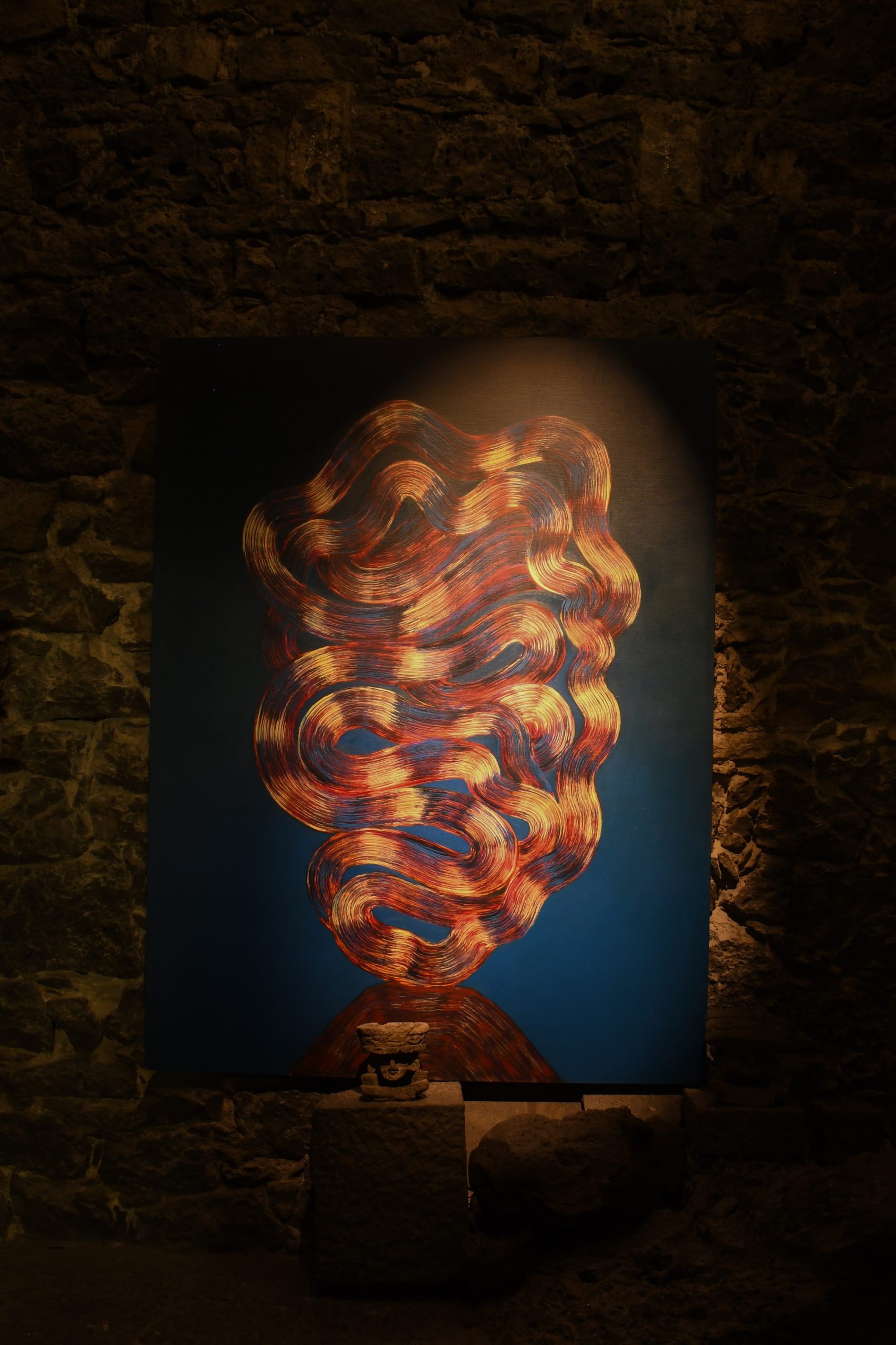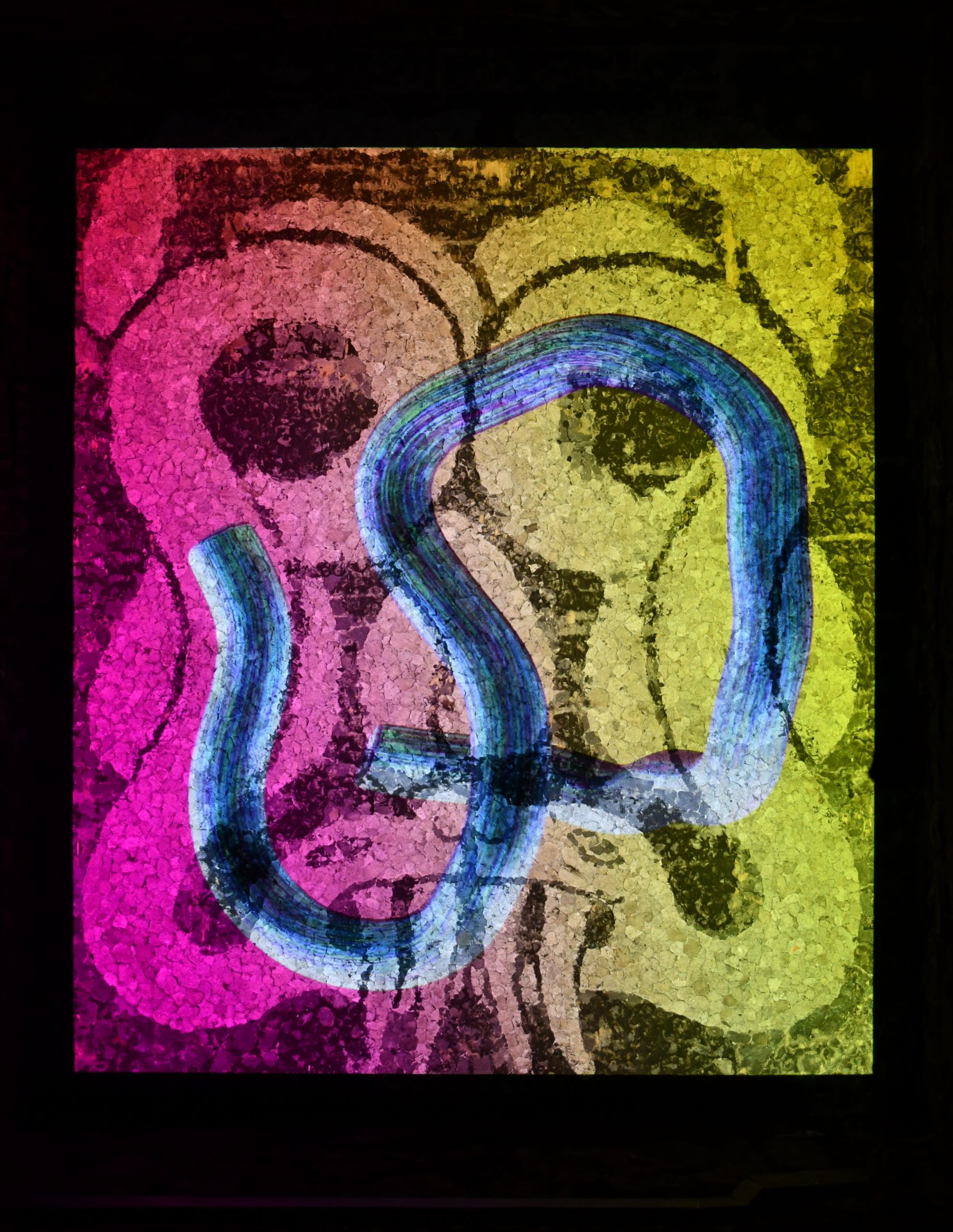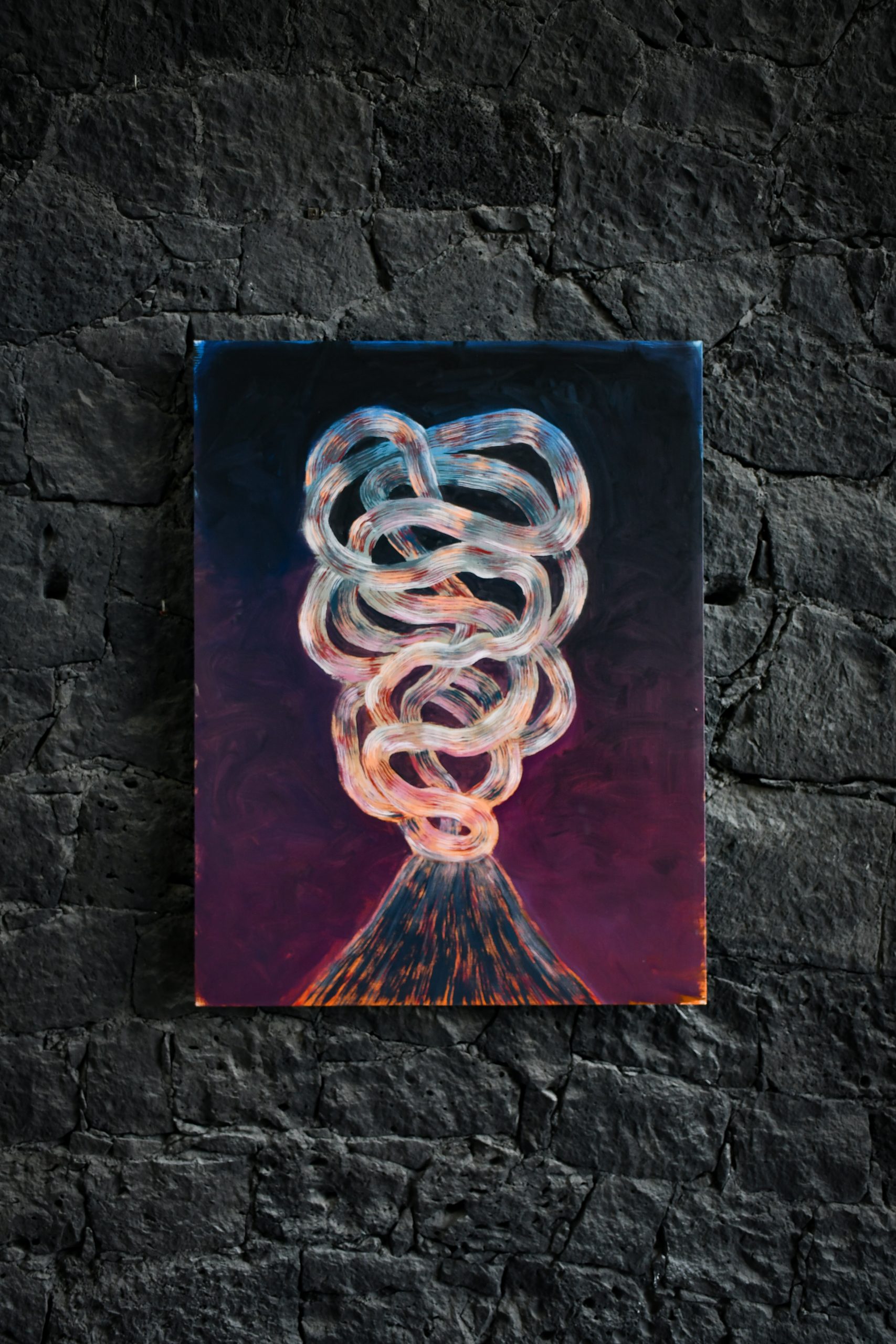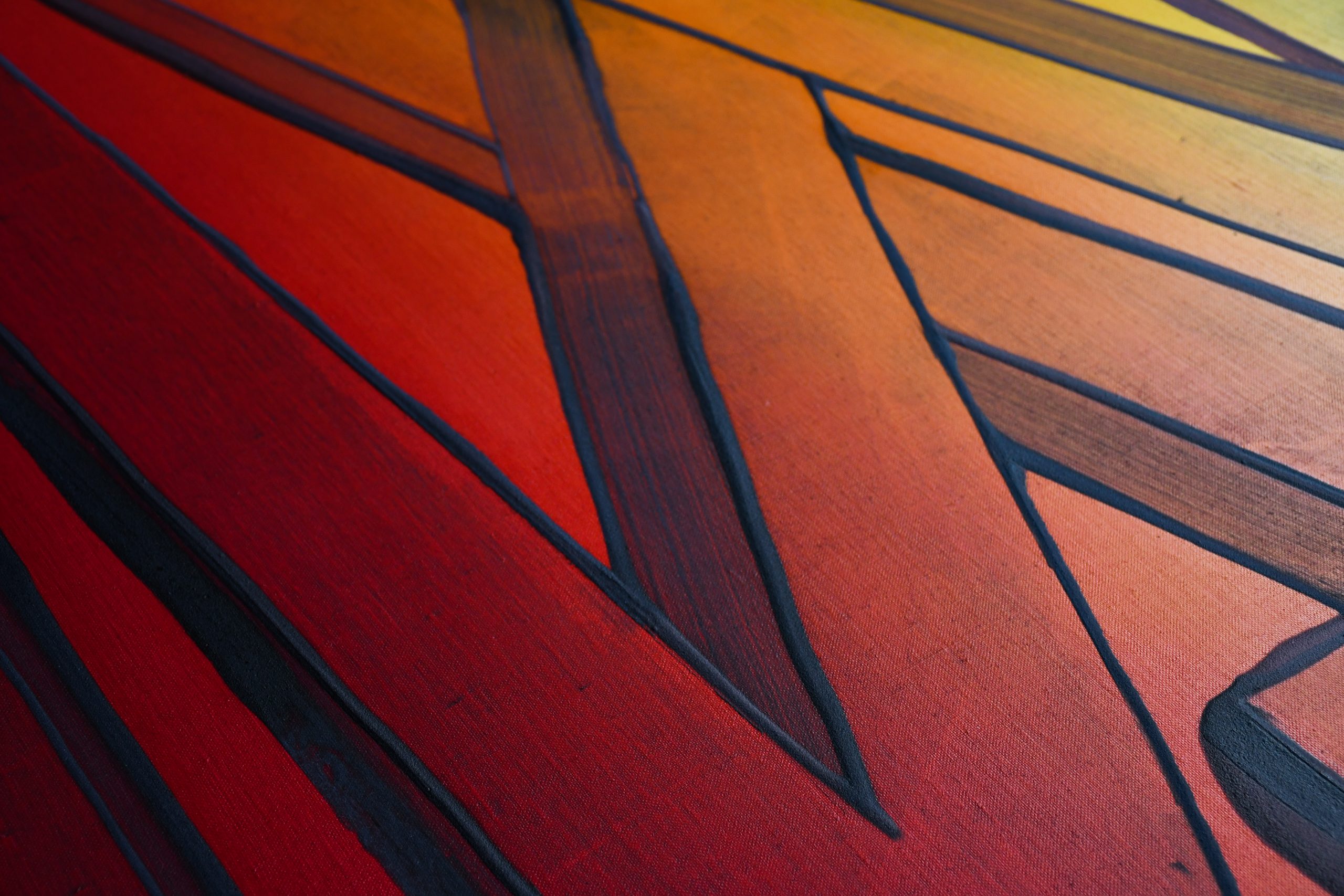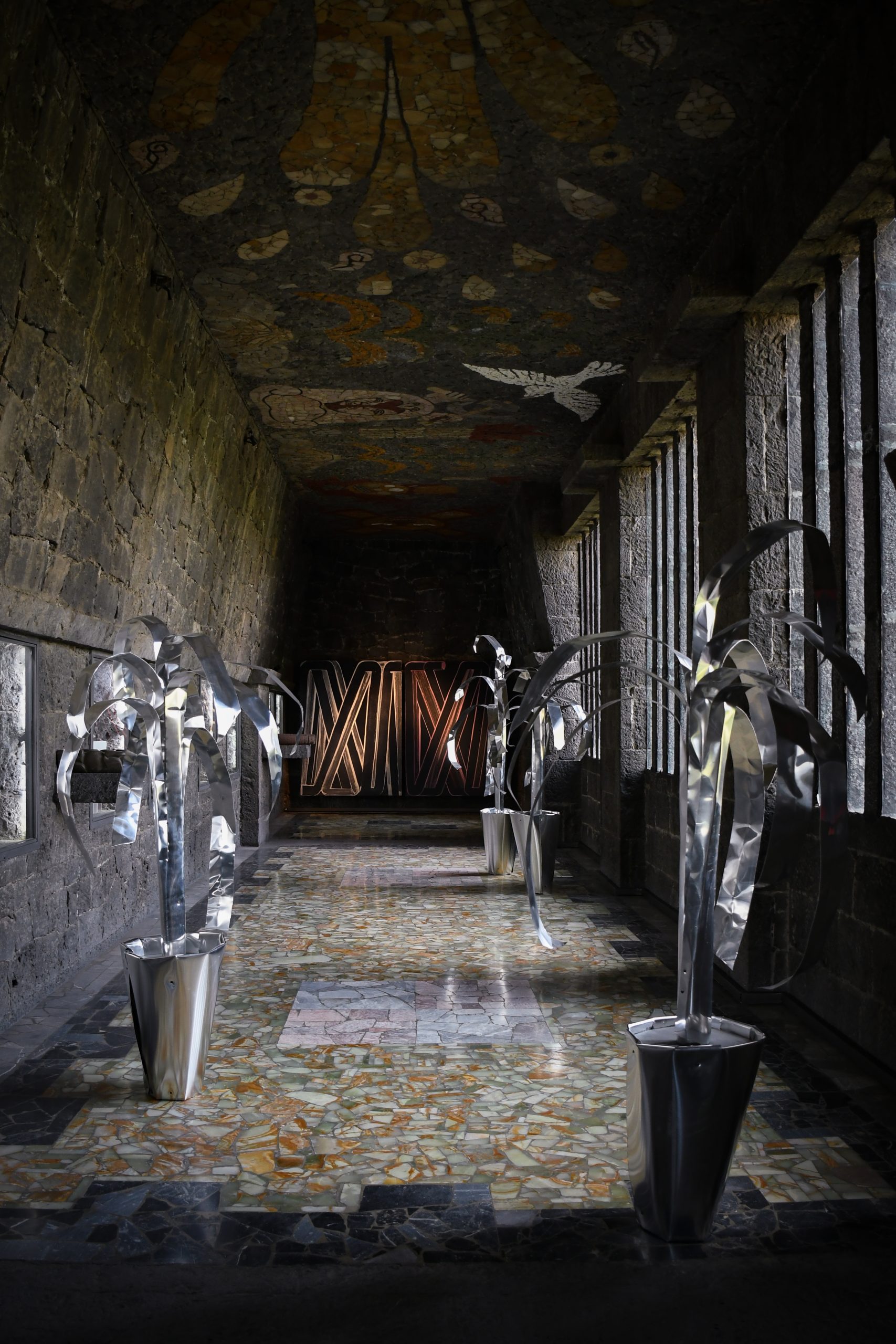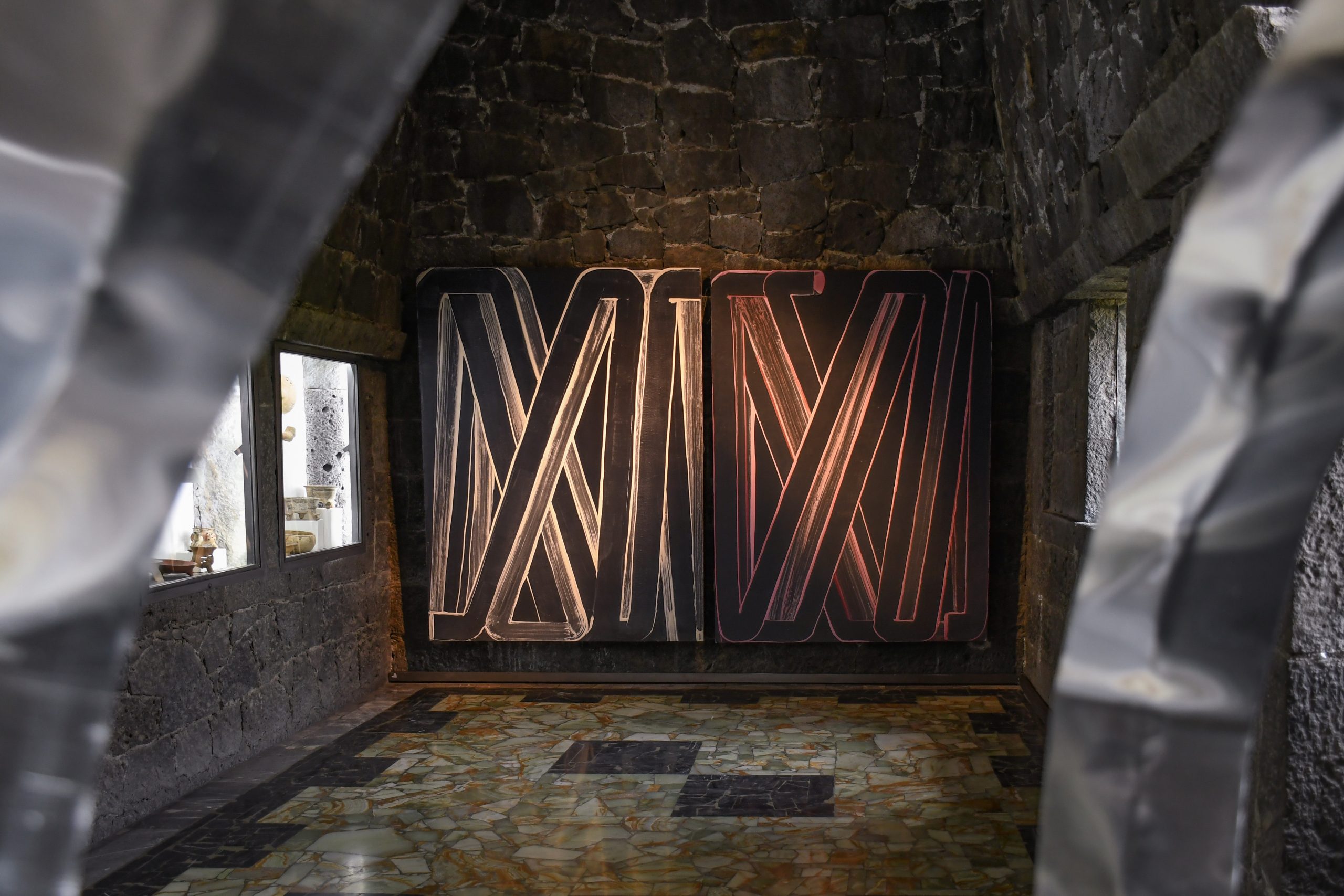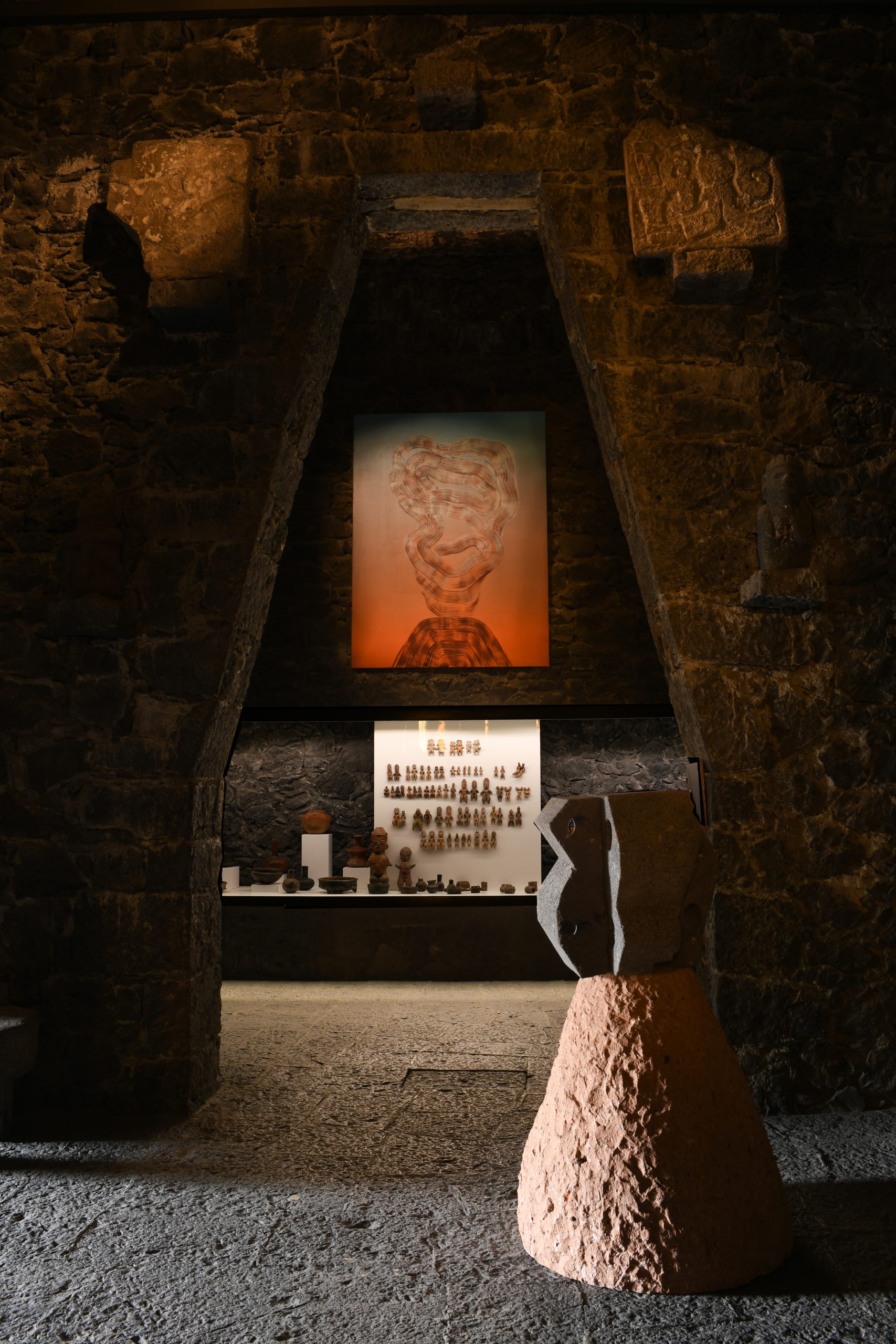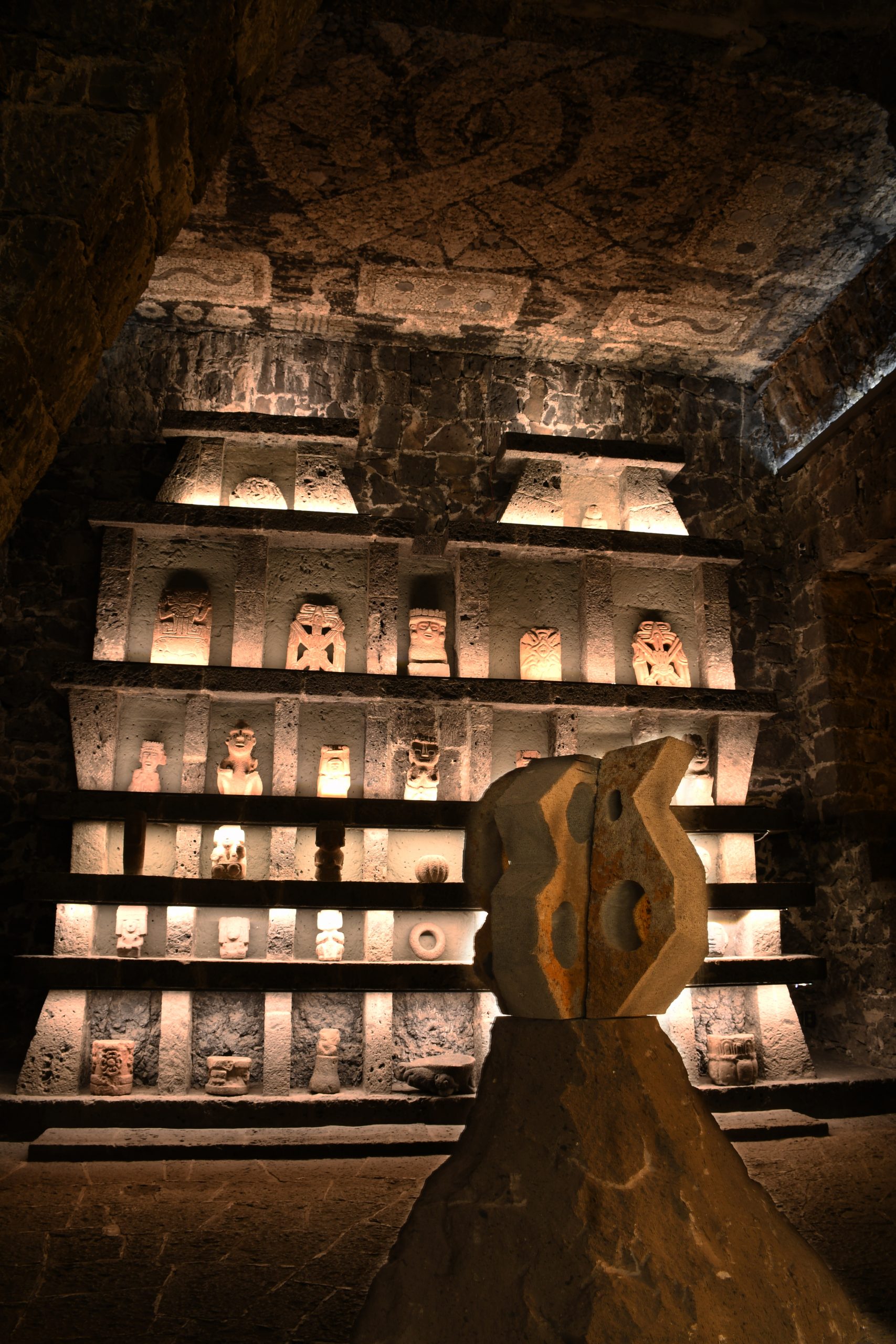TEMPORARY EXHIBIT
From June to September over 30 works by Robert Janitz will be on display throughout the three levels of the museum and the exterior of the architectural complex. Works include paintings, large-format sculptures and an NFT. Several pieces were made specifically for this exhibition, such as Bees of the Future, and the four sculptures carved out of basalt and quarry stone from the State of Mexico and Michoacán.
&
Robert Janitz at the Anahuacalli
Like Diego Rivera, Robert Janitz was born in the mountains. Diego spent his childhood in Guanajuato, which means ‘hill of frogs’ in the Purépecha language. Robert grew up in Alsfeld in central Germany, very close to the great basalt range of Vogelsberg, which translates as ‘mountain of birds’. Robert and Diego share a rocky way of thinking, and a vocabulary typical of children who amuse themselves by gathering stones. It seems that they share a geological DNA, a mineral origin.
Janitz creates obsessive repetitions of the same subjects: volcanoes and bacilli that intertwine. Beyond an aesthetic exercise, Robert produces an almost metaphysical and spiritual experience, much like what happens when one murmurs a mantra. With each variation the artist disperses particles throughout the multiverse, elements which communicate between one another with smoke signals that leave traces and materialize in our dimension.
According to Diego, the paintings of the painter José María Velasco were never faithful representations of reality, but rather optical and mathematical exercises that constructed a landscape that did not exist as such. Janitz paints two-dimensional, non-figurative sculptures that play with a similar intention: they function as access points for deciphering secret subterranean systems and unraveling the underlying layers of his work. Do they represent fumaroles or Paleozoic lampreys? Is there a chance they might be the sandworms of Dune? They could be a volcano’s entrails being expelled, or our constricted guts trying to uncoil themselves, or our brains made into a skein. At times, Robert paints solid chaos in which there is no empty space. At others, he leaves room for the disorder to disperse like vapor. The shapes may evoke the madness of Medusa, or the hair of the warrior woman Cihuateteo, who was considered an amulet of protection in battle.
They could also be snakes, slithering animals associated with rebirth. Diego “painted” them in stone on the ceilings of the Anahuacalli. They symbolize eternal cycles, uroboros that gnaw their own tails, guides in our journey through this labyrinth. They bring to mind Gucumatz — the green feathered serpent — from Quiché mythology, the creator of the Earth in the Popol Vuh.
The tubular structures, halfway between hieroglyphs and shapes, also remind us of the contractions of lava about to emerge, of cells before bipartition, of nerves and rivers that have not yet formed: a moment which precedes destruction. The different variations of Janitz’s two bodies of work — Volcano Heads and Abstract Paintings — confront us with the ferocity and intensity with which Robert paints, while demonstrating the cautious deliberation which enables him to stop at the right moment.
Robert Janitz offers us a clandestine encounter within the intangible magmatic tunnels of the Anahuacalli. His works function as a metaphor for connection, as communicating vessels that weave between us — or Robert — and other “space-times”, when lava was violently pressurized to form the truncated cones that surround us: Xitle, Iztaccihuatl and Popocatepetl.
Karla Niño de Rivera
Anahuacalli, 2022
From June to September over 30 works by Robert Janitz will be on display throughout the three levels of the museum and the exterior of the architectural complex. Works include paintings, large-format sculptures and an NFT. Several pieces were made specifically for this exhibition, such as Bees of the Future, and the four sculptures carved out of basalt and quarry stone from the State of Mexico and Michoacán.
&
Robert Janitz at the Anahuacalli
Like Diego Rivera, Robert Janitz was born in the mountains. Diego spent his childhood in Guanajuato, which means ‘hill of frogs’ in the Purépecha language. Robert grew up in Alsfeld in central Germany, very close to the great basalt range of Vogelsberg, which translates as ‘mountain of birds’. Robert and Diego share a rocky way of thinking, and a vocabulary typical of children who amuse themselves by gathering stones. It seems that they share a geological DNA, a mineral origin.
Janitz creates obsessive repetitions of the same subjects: volcanoes and bacilli that intertwine. Beyond an aesthetic exercise, Robert produces an almost metaphysical and spiritual experience, much like what happens when one murmurs a mantra. With each variation the artist disperses particles throughout the multiverse, elements which communicate between one another with smoke signals that leave traces and materialize in our dimension.
According to Diego, the paintings of the painter José María Velasco were never faithful representations of reality, but rather optical and mathematical exercises that constructed a landscape that did not exist as such. Janitz paints two-dimensional, non-figurative sculptures that play with a similar intention: they function as access points for deciphering secret subterranean systems and unraveling the underlying layers of his work. Do they represent fumaroles or Paleozoic lampreys? Is there a chance they might be the sandworms of Dune? They could be a volcano’s entrails being expelled, or our constricted guts trying to uncoil themselves, or our brains made into a skein. At times, Robert paints solid chaos in which there is no empty space. At others, he leaves room for the disorder to disperse like vapor. The shapes may evoke the madness of Medusa, or the hair of the warrior woman Cihuateteo, who was considered an amulet of protection in battle.
They could also be snakes, slithering animals associated with rebirth. Diego “painted” them in stone on the ceilings of the Anahuacalli. They symbolize eternal cycles, uroboros that gnaw their own tails, guides in our journey through this labyrinth. They bring to mind Gucumatz — the green feathered serpent — from Quiché mythology, the creator of the Earth in the Popol Vuh.
The tubular structures, halfway between hieroglyphs and shapes, also remind us of the contractions of lava about to emerge, of cells before bipartition, of nerves and rivers that have not yet formed: a moment which precedes destruction. The different variations of Janitz’s two bodies of work — Volcano Heads and Abstract Paintings — confront us with the ferocity and intensity with which Robert paints, while demonstrating the cautious deliberation which enables him to stop at the right moment.
Robert Janitz offers us a clandestine encounter within the intangible magmatic tunnels of the Anahuacalli. His works function as a metaphor for connection, as communicating vessels that weave between us — or Robert — and other “space-times”, when lava was violently pressurized to form the truncated cones that surround us: Xitle, Iztaccihuatl and Popocatepetl.
Karla Niño de Rivera
Anahuacalli, 2022
